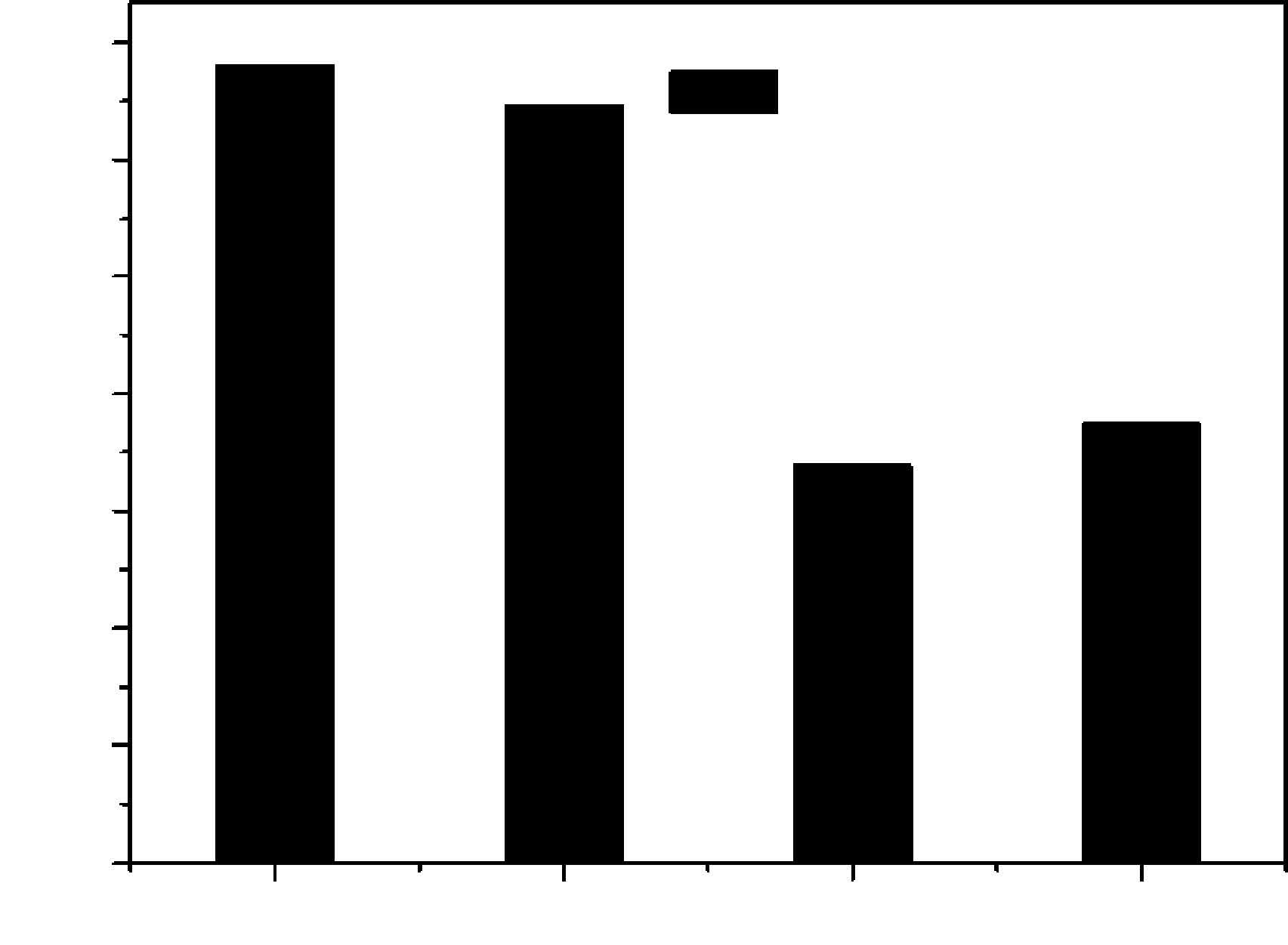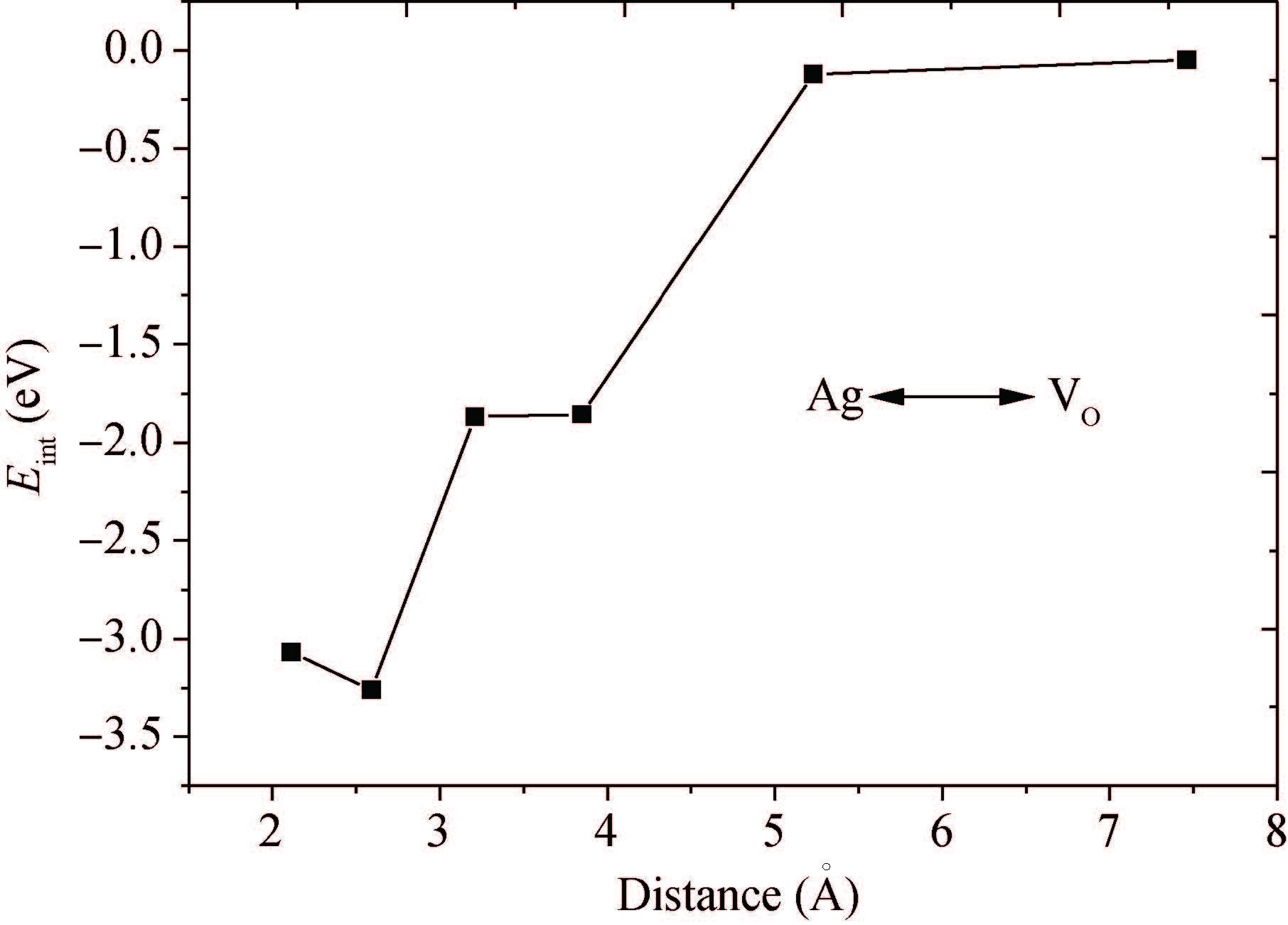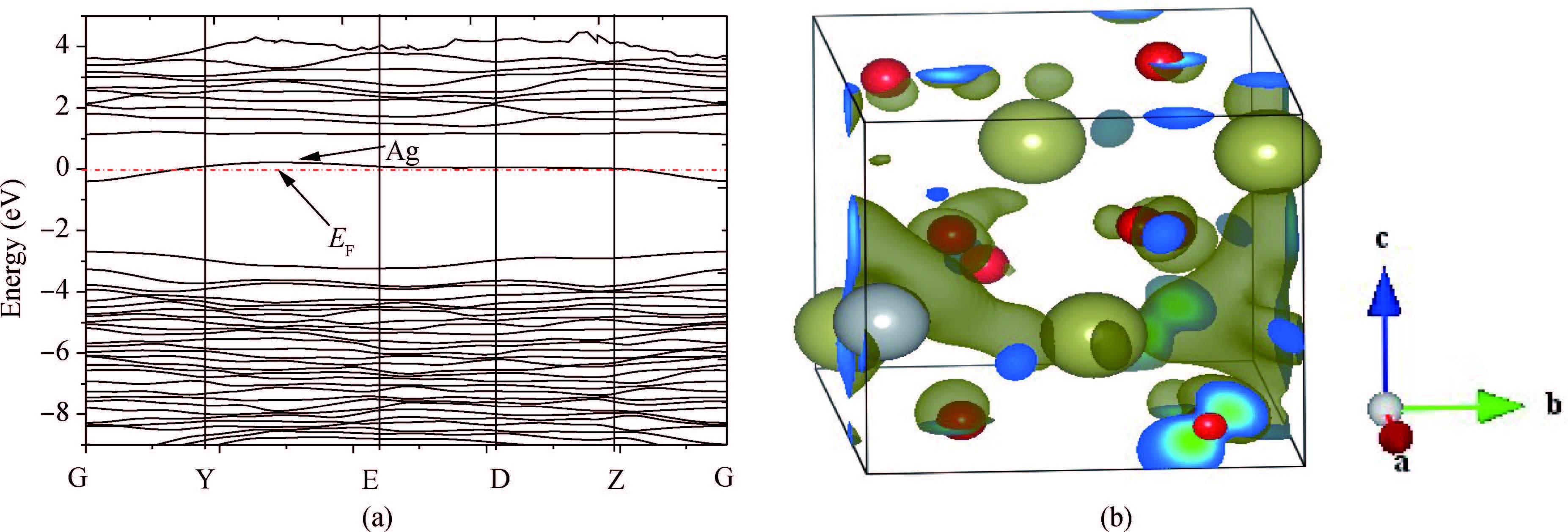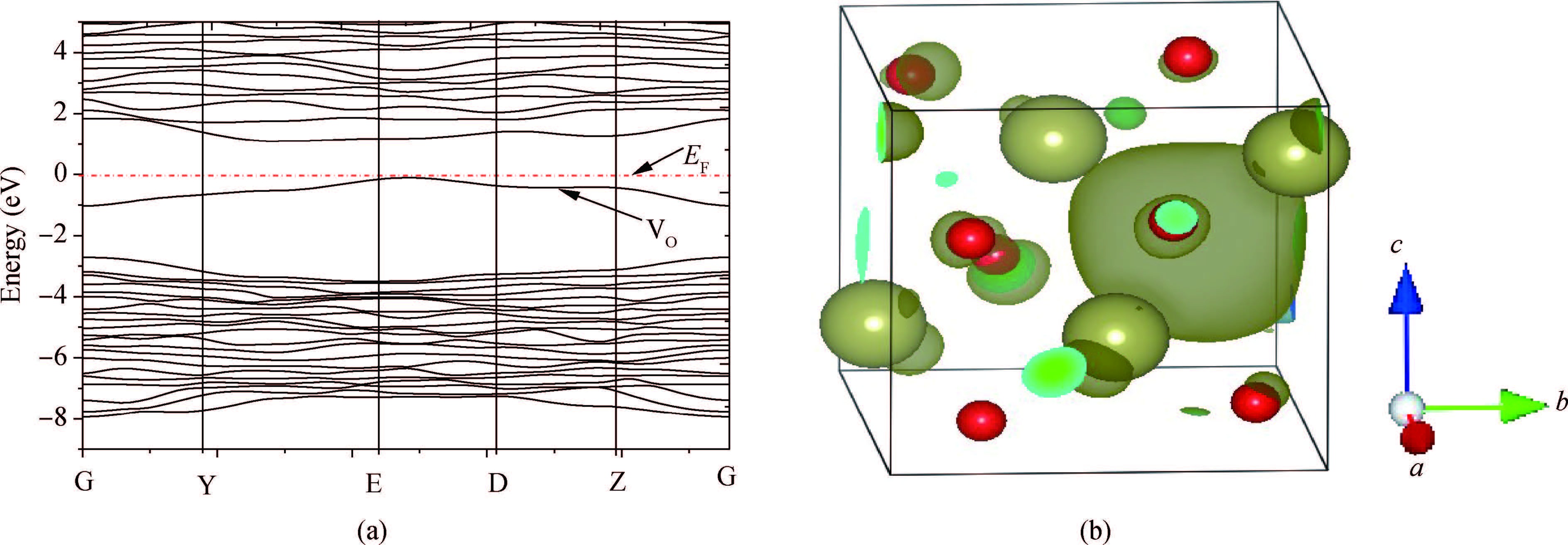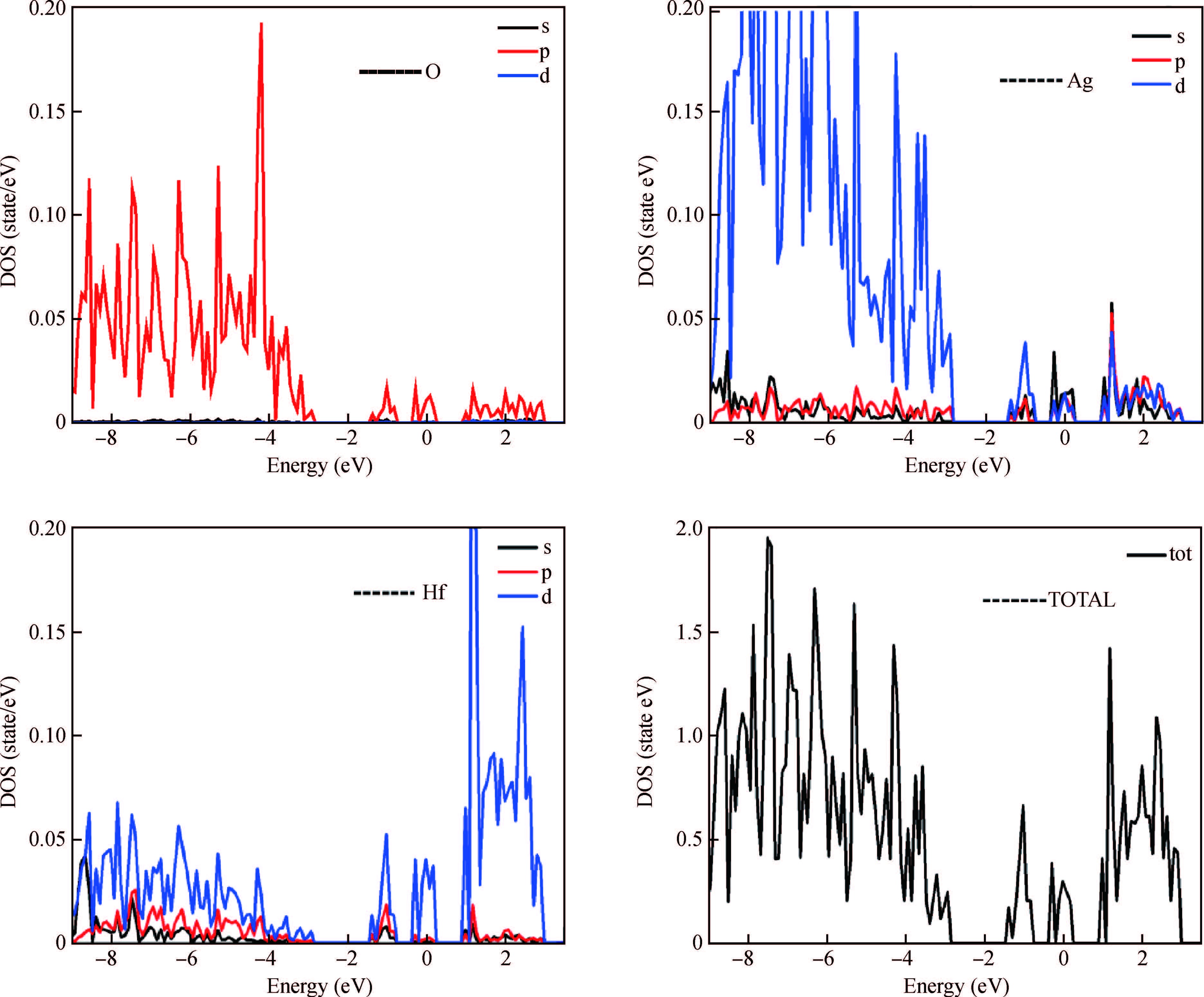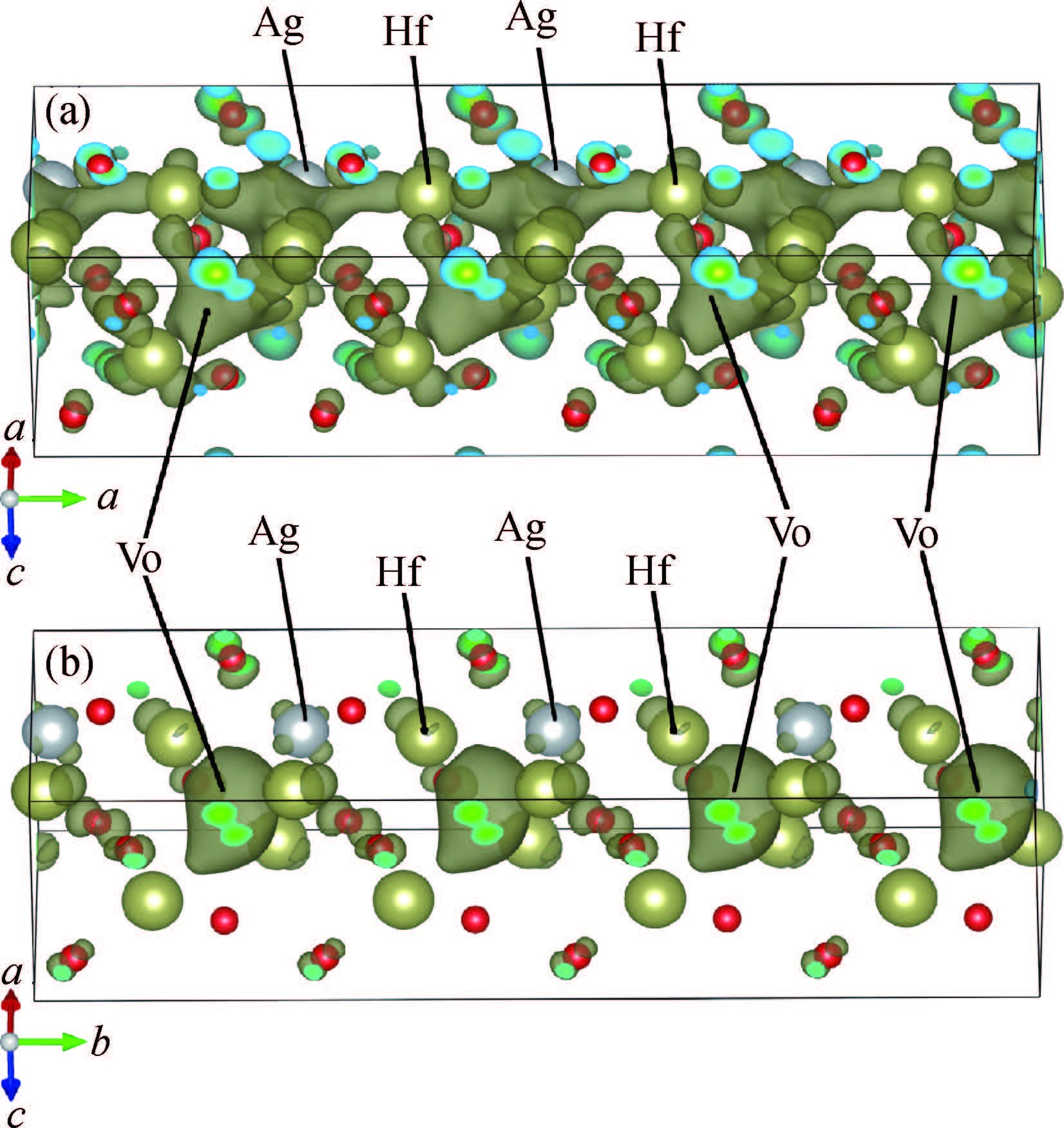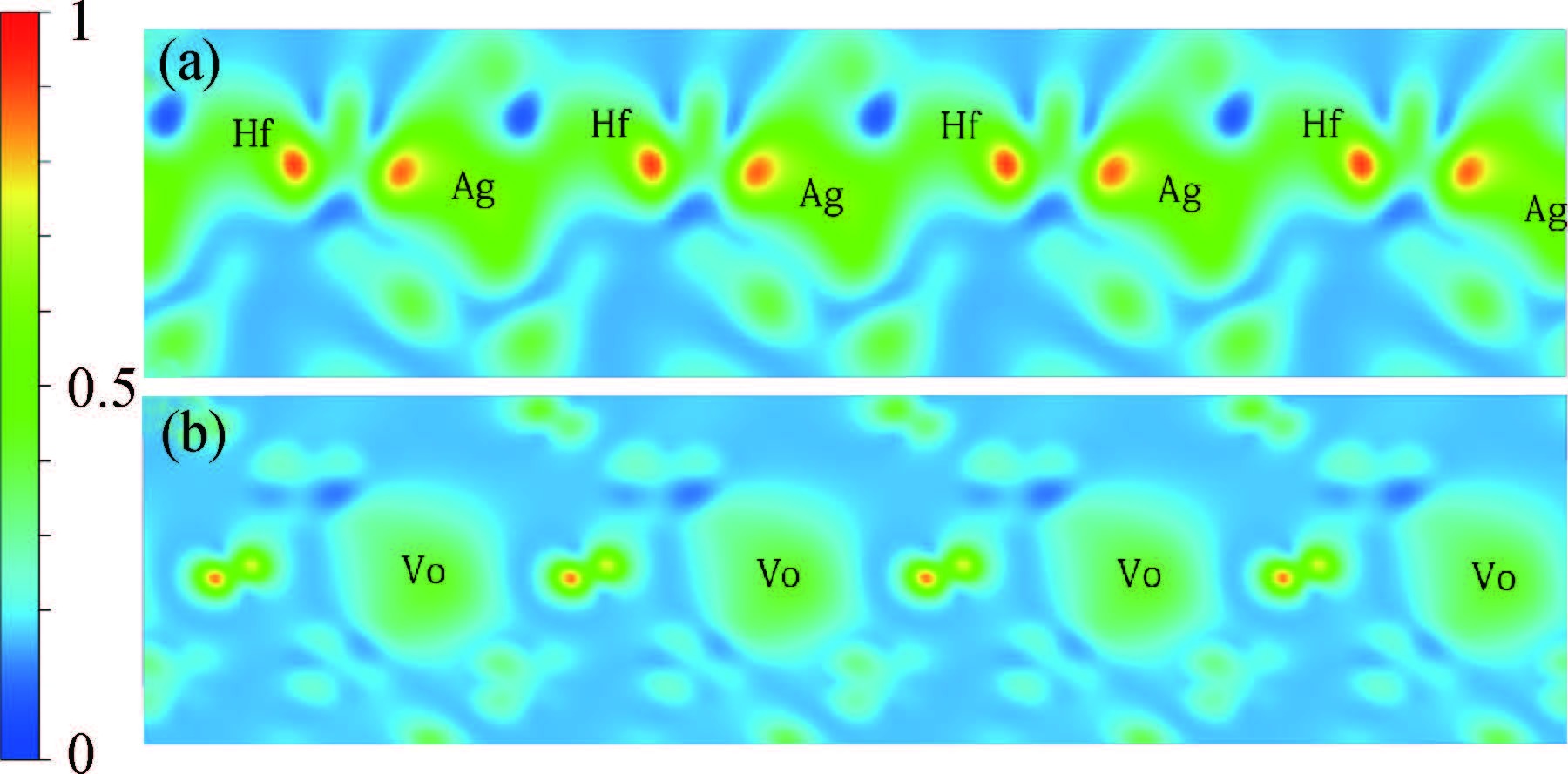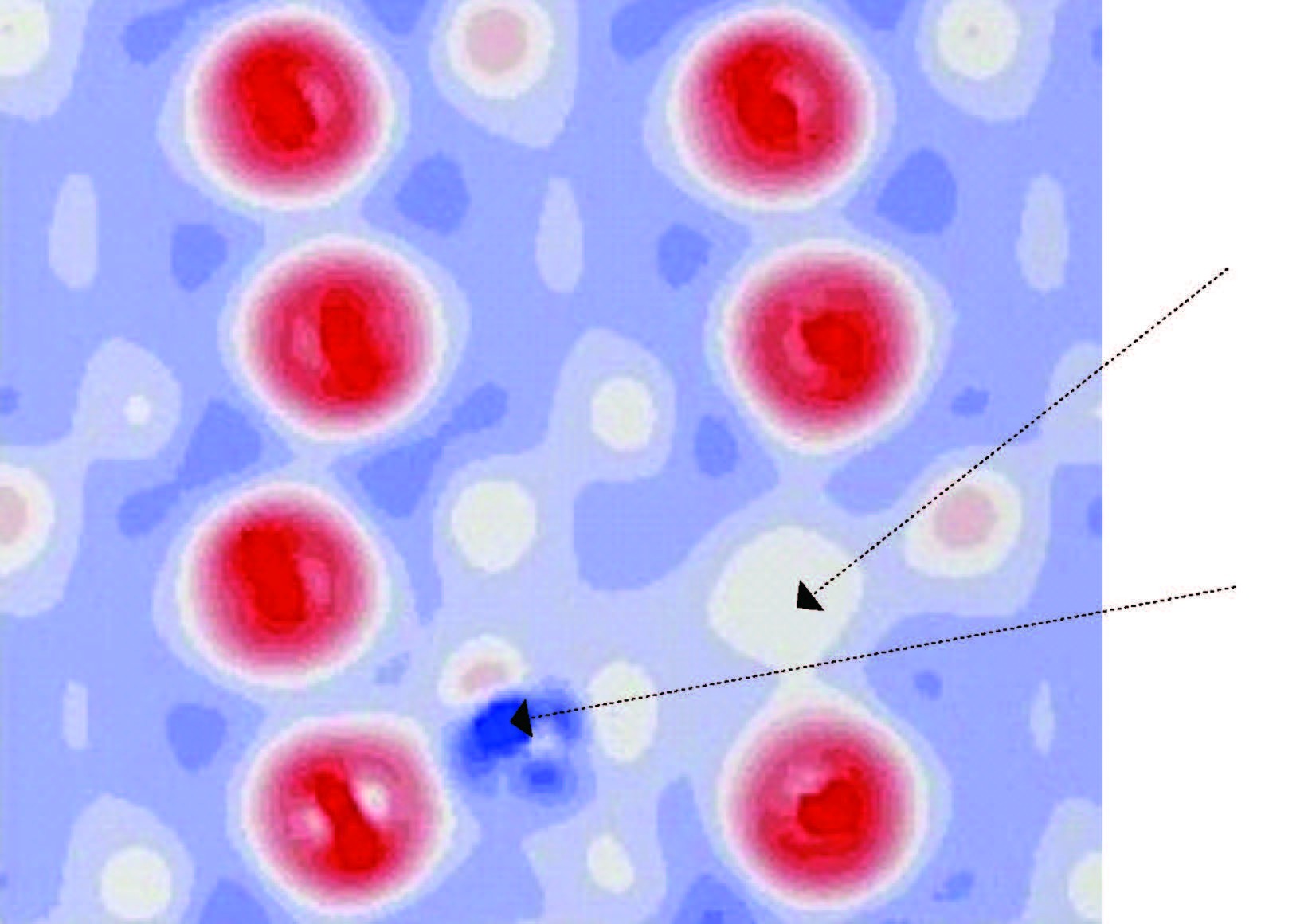| Citation: |
Jin Yang, Yuehua Dai, Shibin Lu, Xianwei Jiang, Feifei Wang, Junning Chen. Physical mechanism of resistance switching in the co-doped RRAM[J]. Journal of Semiconductors, 2017, 38(1): 014008. doi: 10.1088/1674-4926/38/1/014008
****
J Yang, Y H Dai, S B Lu, X W Jiang, F F Wang, J N Chen. Physical mechanism of resistance switching in the co-doped RRAM[J]. J. Semicond., 2017, 38(1): 014008. doi: 10.1088/1674-4926/38/1/014008.
|
Physical mechanism of resistance switching in the co-doped RRAM
DOI: 10.1088/1674-4926/38/1/014008
More Information
-
Abstract
The physical mechanism of the resistance switching for RRAM with co-doped defects (Ag and oxygen vacancy) is studied based on the first principle calculations and the simulation tool VASP. The interaction energy, formation energy and density of states of Ag and oxygen vacancy defect (VO) are calculated. The calculated results reveal that the co-doped system is more stable than the system only doped either Ag or VO defect and the impurity energy levels in the band gap are contributed by Ag and VO defects. The obtained partial charge density confirmed further that the clusters are obvious in the direction of Ag to Hf ions, which means that it is Ag but VO plays a role of conductive paths. For the formation mechanism, the modified electron affinity and the partial charge density difference are calculated. The results show that the ability of electron donors of Ag is stronger than Vm O In conclusion, the conductivity of the physical mechanism of resistance switching in the co-doped system mainly depends on the doped Ag.-
Keywords:
- RRAM,
- resistive switching,
- co-doped,
- conductive path,
- physical mechanism
-
References
[1] Zhu X J, Shang J, Li R. Resistive switching effects in oxide sandwiched structures. Front Mater Sci, 2012, 6(3): 183 doi: 10.1007/s11706-012-0170-8[2] Celano U, Chen Y, Wouters D J. Filament observation in metal-oxide resistive switching devices. Appl Phys Lett, 2013, 102: 121602 doi: 10.1063/1.4798525[3] Chen K H, Chang K C, Chang T C, et al. Improvement of bipolar switching properties of Gd:SiOx RRAM devices on indium tin oxide electrode by low-temperature supercritical CO2 treatment. Nanoscale Res Lett, 2016, 11(1): 1 doi: 10.1186/s11671-015-1209-4[4] Lin C L, Tang C C, Wu S C, et al. Impact of oxygen composition of ZnO metal-oxide on unipolar resistive switching characteristics of Al/ZnO/Al resistive RAM (RRAM). Microelectron Eng, 2015, 136: 15 doi: 10.1016/j.mee.2015.03.027[5] Zhang H, Gao B, Sun B, et al. Ionic doping effect in ZrO2 resistive switching memory. Appl Phys Lett, 2010, 96: 123502 doi: 10.1063/1.3364130[6] Xiao B, Gu T, Tada T, et al. Conduction paths in Cu/amorphous-Ta2O5/Pt atomic switch: first-principles studies. J Appl Phys, 2014, 115: 034503 doi: 10.1063/1.4861724[7] Dai, Y H, Zhao Y Y, Wang J Y, et al. First principle simulations on the effects of oxygen vacancy in HfO2-based RRAM. AIP Adv, 2015, 5(1): 14 http://adsabs.harvard.edu/abs/2015AIPA....5a7133D[8] Zhao L, Clima S, Magyari-Köpe B, et al.Ab initio modeling of oxygen-vacancy formation in doped-HfOx RRAM: effects of oxide phases, stoichiometry, and dopant concentrations. Appl Phys Lett, 2015, 107: 013504 doi: 10.1063/1.4926337[9] Jiang X W, Dai G Z, Lu S B, et al. Effect of Al doping on the reliability of HfO2 as a trapping layer: first-principles study. Acta Phys Sin, 2015, 64(9): 091301 https://www.researchgate.net/publication/282281898_Effect_of_Al_doping_on_the_reliability_of_HfO2_as_a_trapping_layer_First-principles_study[10] Wang Y, Liu Q, Lü H B, et al. Improving the electrical performance of resistive switching memory using doping technology. Chin Sci Bull, 2012, 57(11): 1235 doi: 10.1007/s11434-011-4930-0[11] Calka P, Sowinska M, Bertaud T, et al. Engineering of the chemical reactivity of the Ti/HfO2 interface for RRAM: experiment and Theory. Am Chem Soc, 2014, 6: 5056 http://cn.bing.com/academic/profile?id=5cedbd3449d72129ed9241aabe42affe&encoded=0&v=paper_preview&mkt=zh-cn[12] Traore B, Blaise P, Vianello E, et al. HfO2 based RRAM: electrode effects, Ti/HfO2 interface, charge injection, and oxygen (O) defects diffusion through experiment and ab initio calculations. IEEE Trans Electron Device, 2016, 63(1): 360 doi: 10.1109/TED.2015.2503145[13] Kasai H, Aspera S M, Kishi H, et al. First principles study on the switching mechanism in resistance random access memory devices. Simul Semicond Process Devices, 2011: 211[14] Gavartin J L, Ramo D M, Shluger A L, et al. Negative oxygen vacancies in HfO2 as charge traps in high-k stacks. Appl Phys Lett, 2006, 89: 082908 doi: 10.1063/1.2236466[15] Zhao Y Y, Wang J Y, Dai Y H, et al. Metal dopants in HfO2-based RRAM: first principle study. J Semicond, 2014, 35(4): 042002 doi: 10.1088/1674-4926/35/4/042002[16] Janousch M, Meijer G I, Staub U, et al. Role of oxygen vacancies in Cr-doped SrTiO3 for resistance-change memory. Adv Mater, 2007, 19: 2232 doi: 10.1002/(ISSN)1521-4095[17] Wang S Y, Lee D Y, Tseng T Y, et al. Effects of Ti top electrode thickness on the resistive switching behaviors of RF-sputtered ZrO2 memory films. Appl Phys Lett, 2009, 95: 112904 doi: 10.1063/1.3231872[18] Kwon D H, Kim K M, Jang J H, et al. Atomic structure of conducting nanofilaments in TiO2 resistive switching memory. Nat Nanotechnol, 2010, 5: 148 doi: 10.1038/nnano.2009.456[19] Park S G, Magyari-Köpe B, Nishi Y. theoretical study of the resistance switching mechanism in rutile TiO2-x for ReRAM: the role of oxygen vacancies and hydrogen impurities. Symposium on VLSI Technology Digest of Technical, 2011: 46 https://www.researchgate.net/publication/252029529_Theoretical_Study_of_the_Resistance_Switching_Mechanism_in_Rutile_TiO2-x_for_ReRAM_The_role_of_oxygen_vacancies_and_hydrogen_impurities[20] Lu J L, Luo J, Zhao H P, et al. Optimal migration route of Cu in HfO2. J Semicond, 2012, 33(7): 072002 doi: 10.1088/1674-4926/33/7/072002[21] Janousch M, Meijer G, Staub U, et al. Role of oxygen vacancies in Cr-doped SrTiO3 for resistance-change memory. Adv Mater, 2007, 19: 2232 doi: 10.1002/(ISSN)1521-4095[22] Tan T T, Guo T T, Li X C. et al. Impacts of Au-doping on the performance of Cu/HfO2/Pt RRAM devices. Appl Surf Sci, 2014, 317: 982 doi: 10.1016/j.apsusc.2014.09.027[23] Deng N, Pang H, Wu W. Effects of different dopants on switching behavior of HfO2-based resistive random access memory. Chin Phys B, 2014, 23(10):107306 doi: 10.1088/1674-1056/23/10/107306[24] Akbari M, Lee J S. Control of resistive switching behaviors of solution-processed HfOx-based resistive switching memory devices by n-type doping. RSC Adv, 2016, 6: 21917 doi: 10.1039/C6RA01369D[25] Clark S J, Segall M D, Pickard C J, et al. First principles methods using CASTEP. Zeitschrift für Kristallographie, 2005, 220(5): 567 http://cn.bing.com/academic/profile?id=81b5f1d0e80d31f85c02f4004a6013c9&encoded=0&v=paper_preview&mkt=zh-cn[26] Zhou M X, Zhao Q, Zhang W, et al. The conductive path in HfO2: first principles study. J Semicond, 2012, 33(7): 072002 doi: 10.1088/1674-4926/33/7/072002[27] Zhao Q, Zhou M X, Zhang W, et al. Effect of interaction between defects on the uniformity of doping HfO2-based RRAM: a first principle study. J Semicond, 2013, 34(3): 032001 doi: 10.1088/1674-4926/34/3/032001[28] Tse K Y, Robertson J. Control of Schottky barrier heights on high-k gate dielectrics for future complementary metal-oxide semiconductor devices. Phys Rev Lett, 2007, 99: 086805 doi: 10.1103/PhysRevLett.99.086805[29] Silvi B, Savin A. Classification of chemical bonds based on topological analysis of electron localization functions. Nature, 1994, 371: 683 doi: 10.1038/371683a0[30] Xiao B, Watanabe S. Oxygen vacancy effects on amorphous-TaOx-based resistance switch: first principle study. Nanoscale, 2014, 6: 10169 doi: 10.1039/C4NR02173H[31] Liu Q, Long S B, Lv H B, et al. Controllable growth of nanoscale conductive filaments in solid-electrolyte-based ReRAM by using a metal nanocrystal covered bottom electrode. Ame Chem Soc, 2010, 4(10): 6162 http://cn.bing.com/academic/profile?id=b8f6dd192595e996c08fdb18501dd555&encoded=0&v=paper_preview&mkt=zh-cn[32] Liu Q, Sun J, Lv H B. et al. Real-time observation on dynamic growth/dissolution of conductive filaments in oxide-electrolyte-based ReRAM. Adv Mater, 2012, 24(14): 1844 doi: 10.1002/adma.v24.14[33] Wang Y, Liu Q, Long S B, et al. Investigation of resistive switching in Cu-doped HfO2 thin film for multilevel non-volatile memory applications. Nanotechnology, 2010, 21: 045202 doi: 10.1088/0957-4484/21/4/045202[34] Gritsenko V A, Nekrashevich S S, Vasilev V V. Electronic structure of memory traps in silicon nitride. Microelectron Eng, 2009, 86: 1866 doi: 10.1016/j.mee.2009.03.093 -
Proportional views





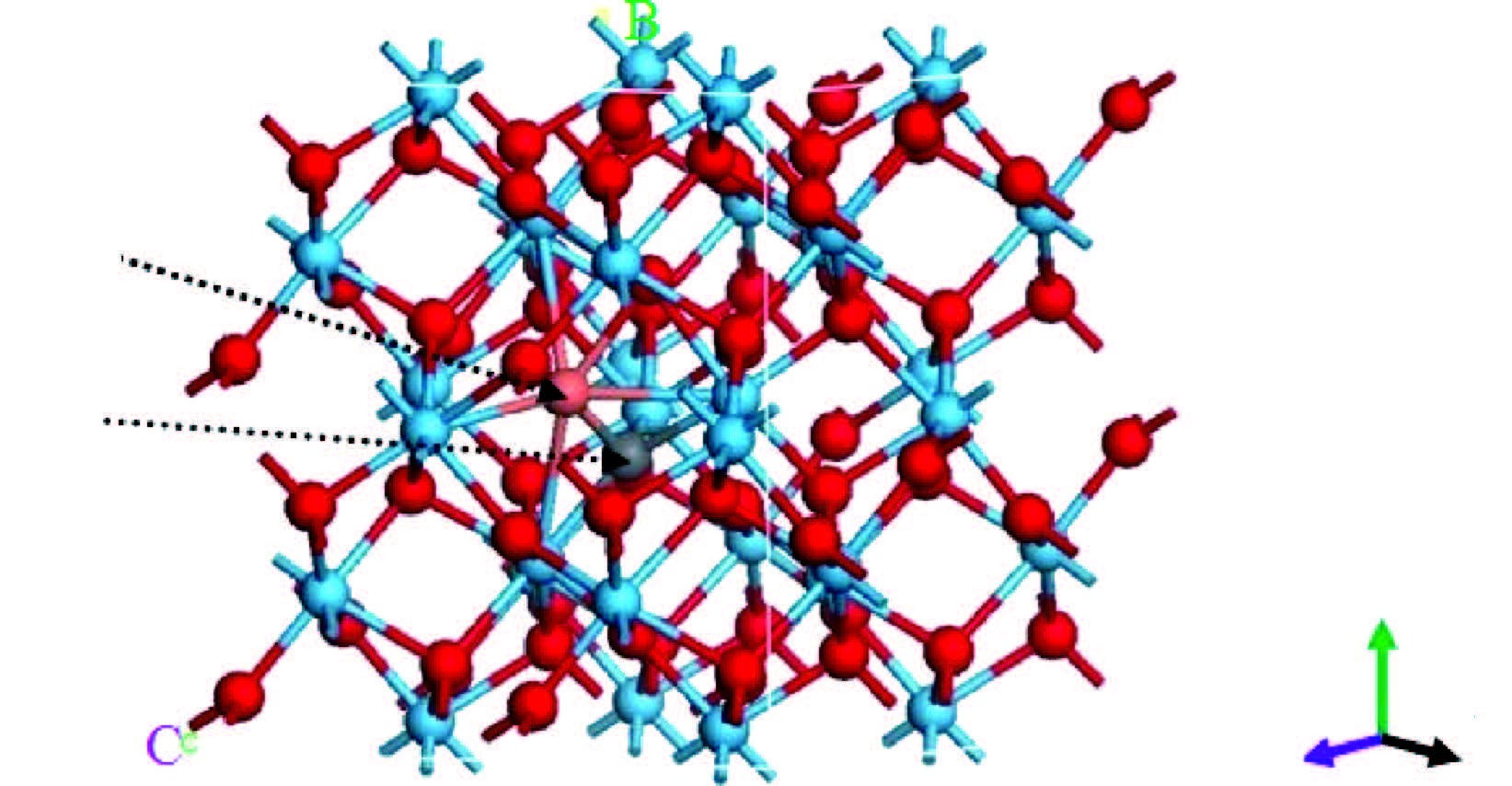
 DownLoad:
DownLoad:
